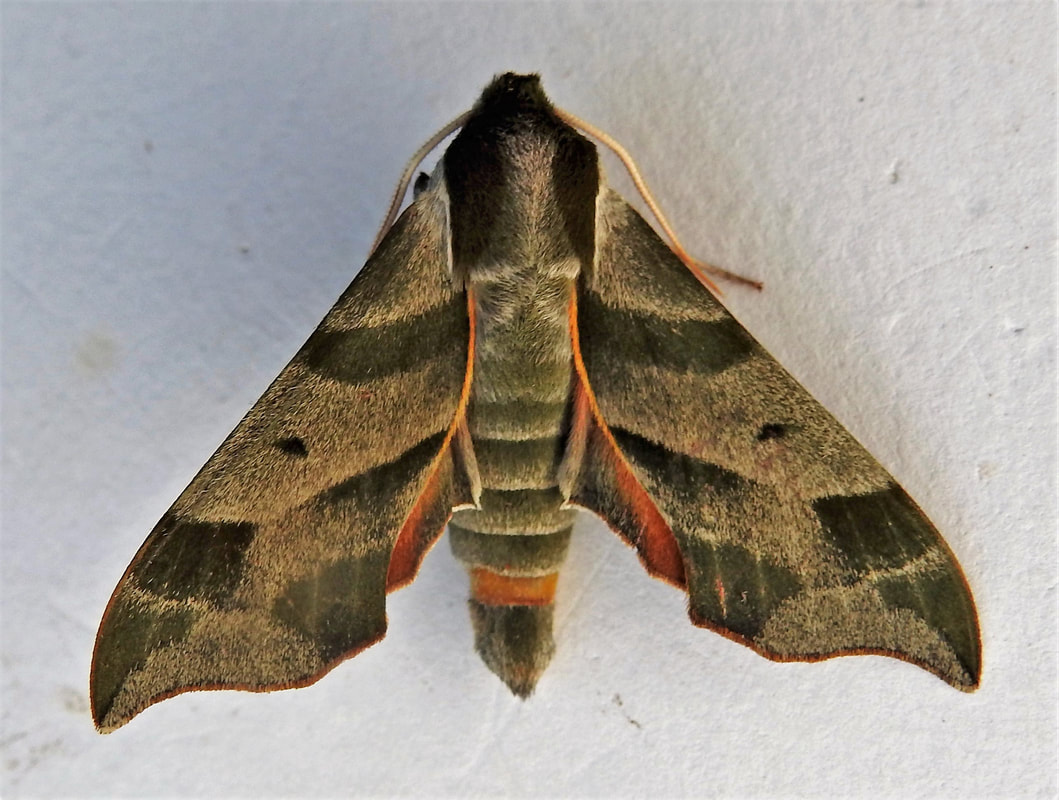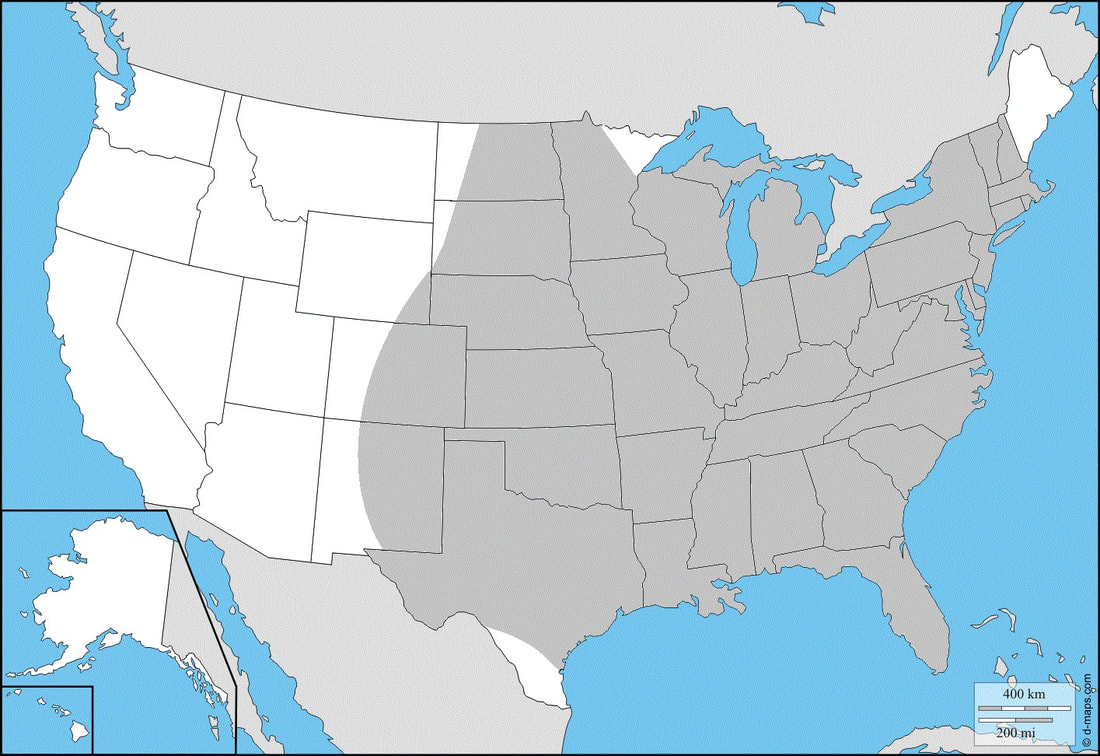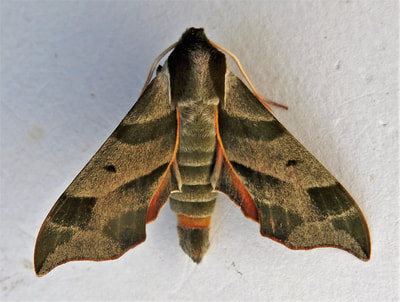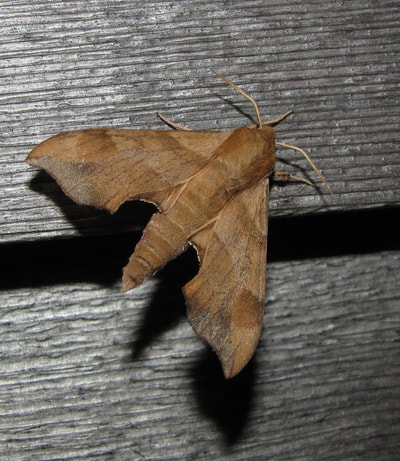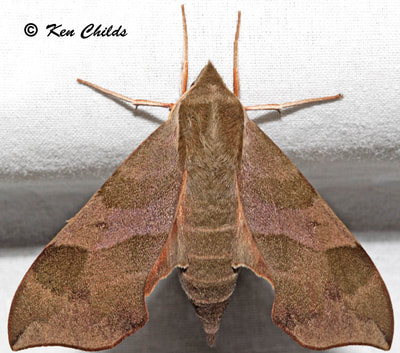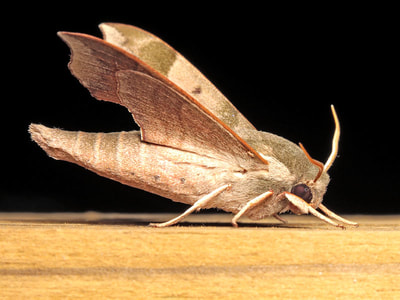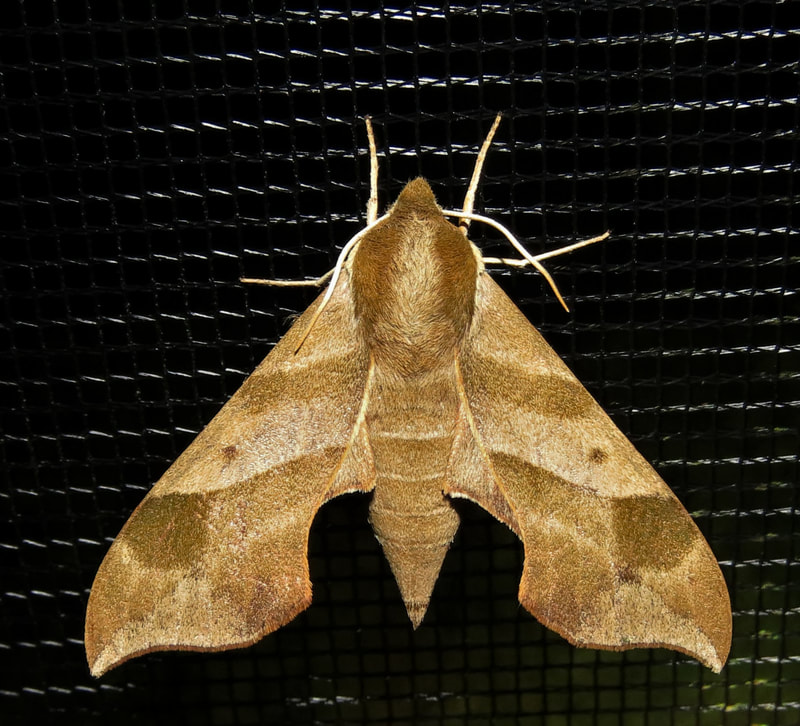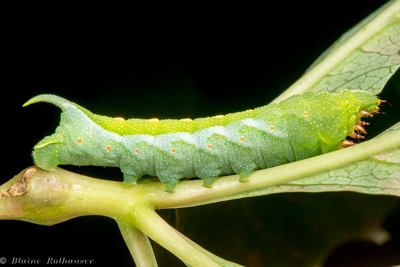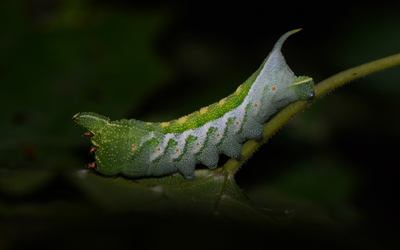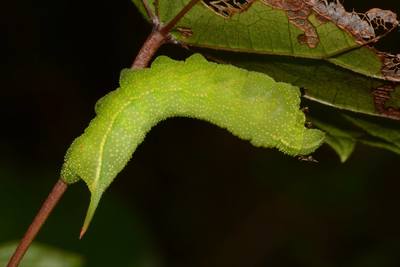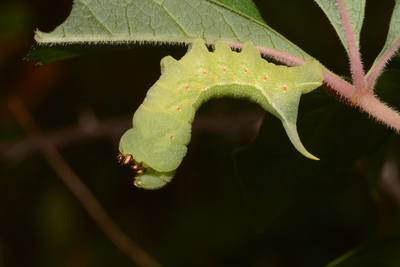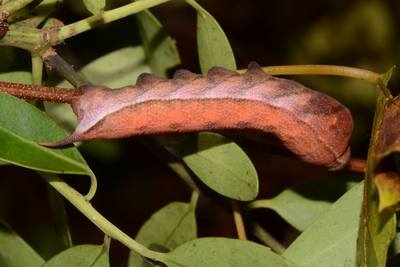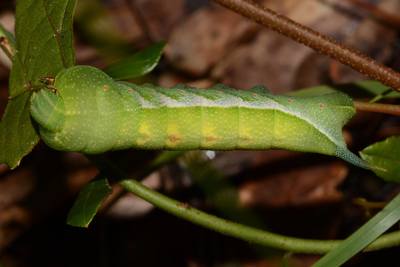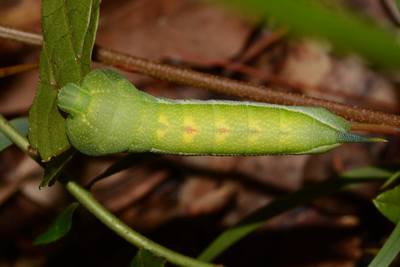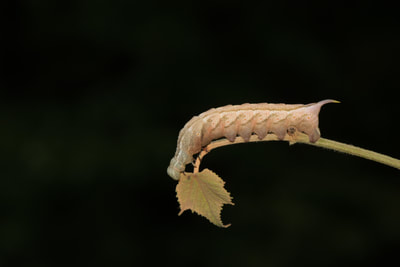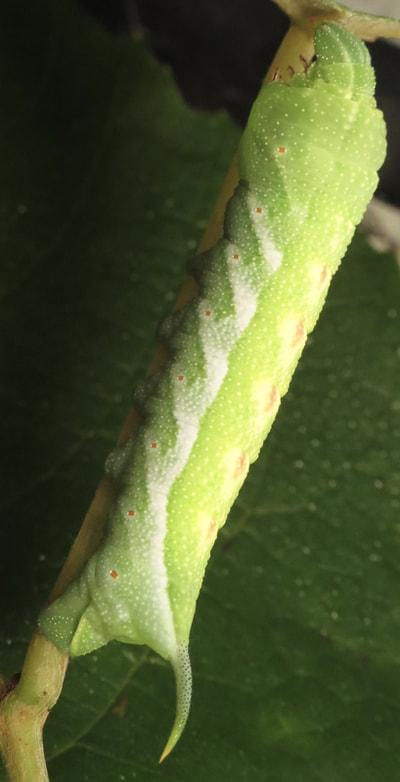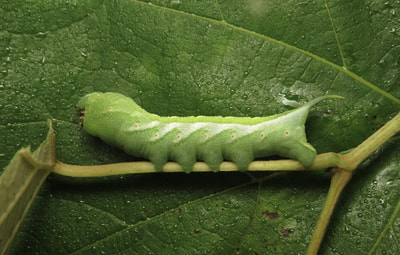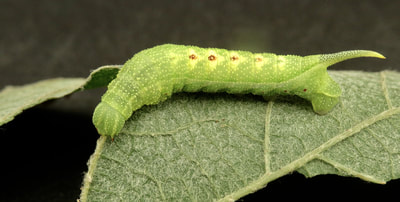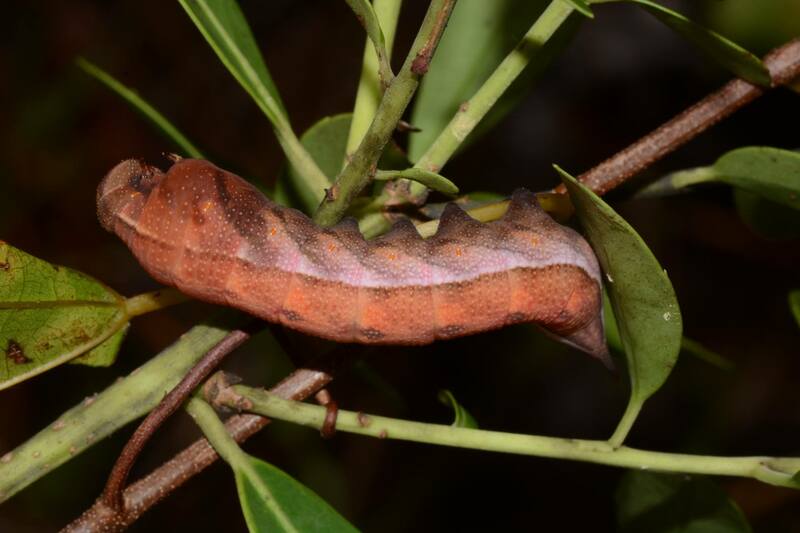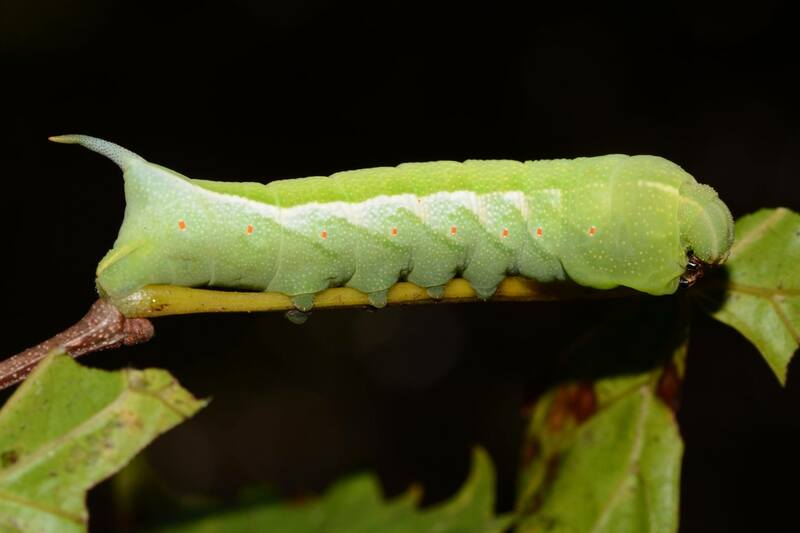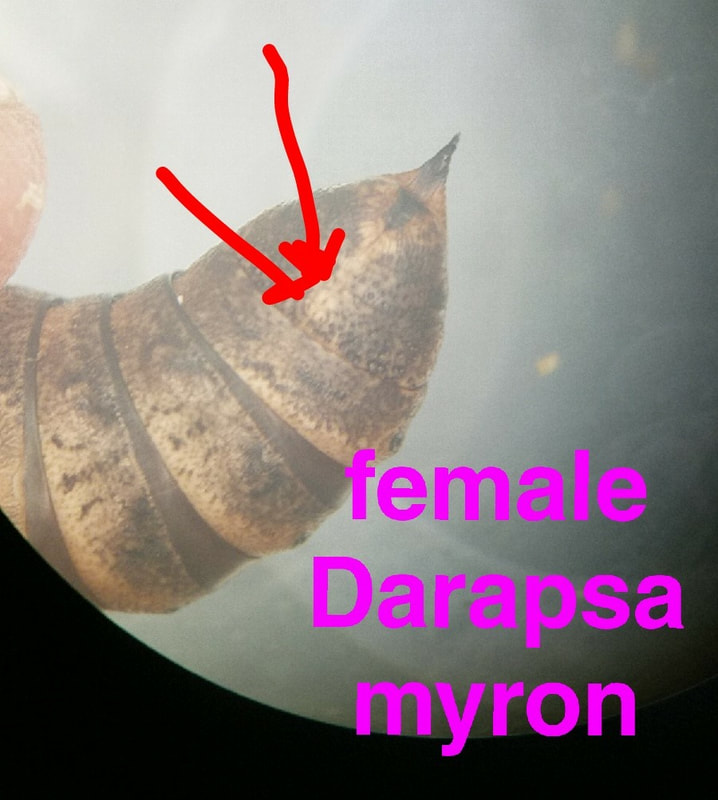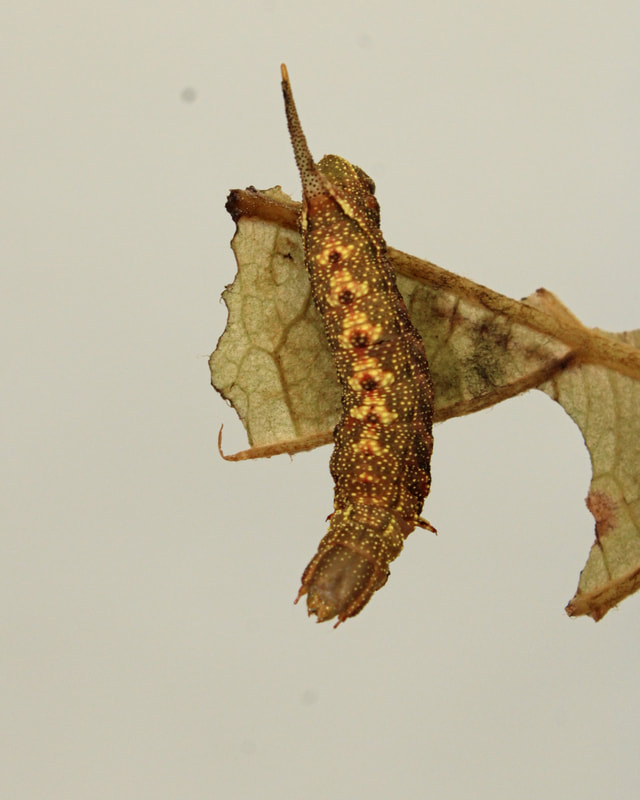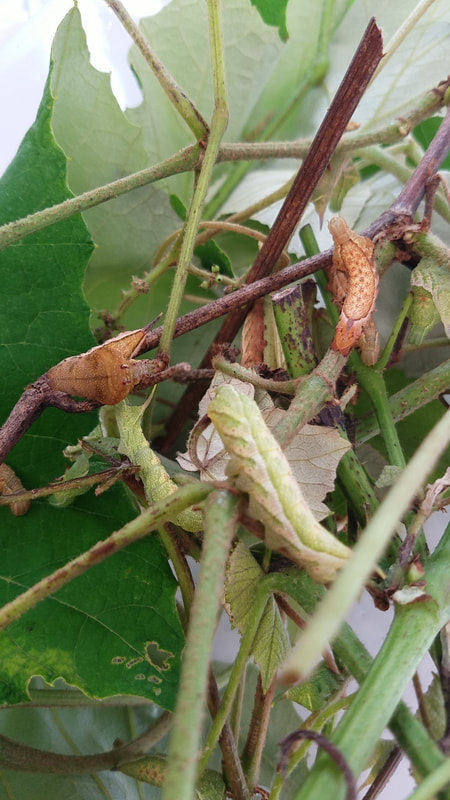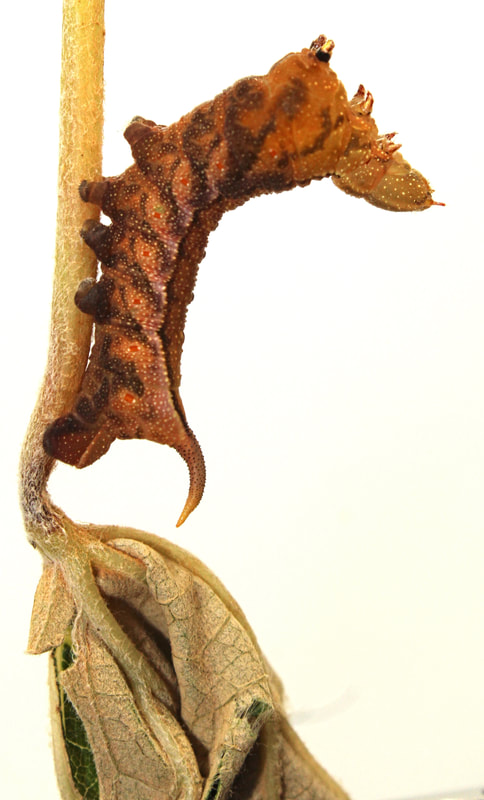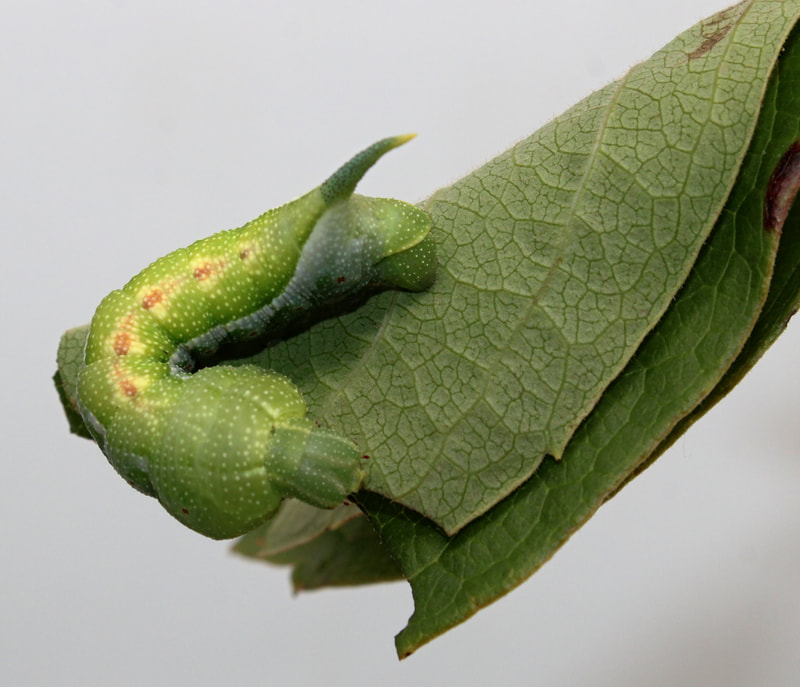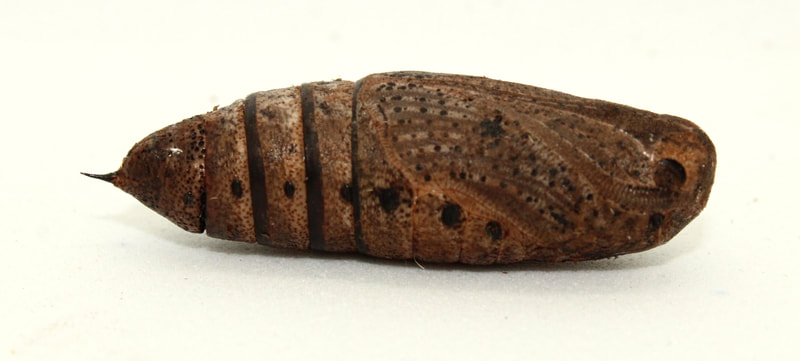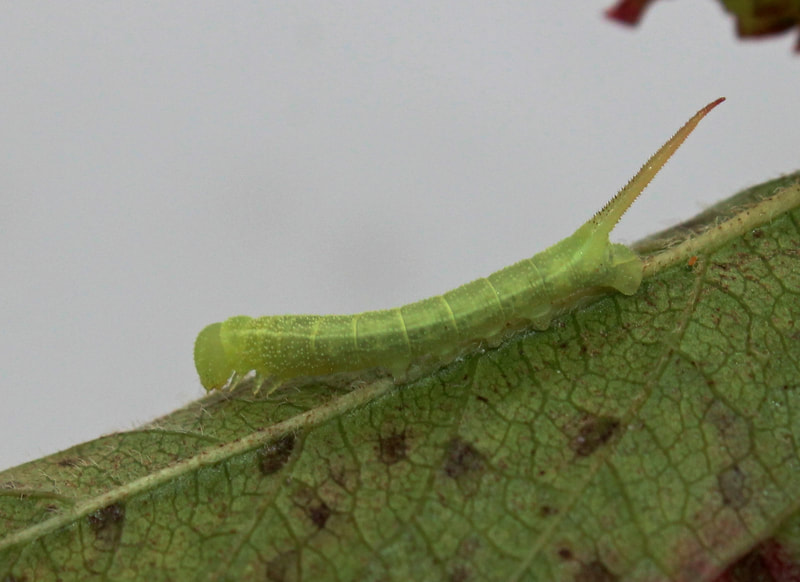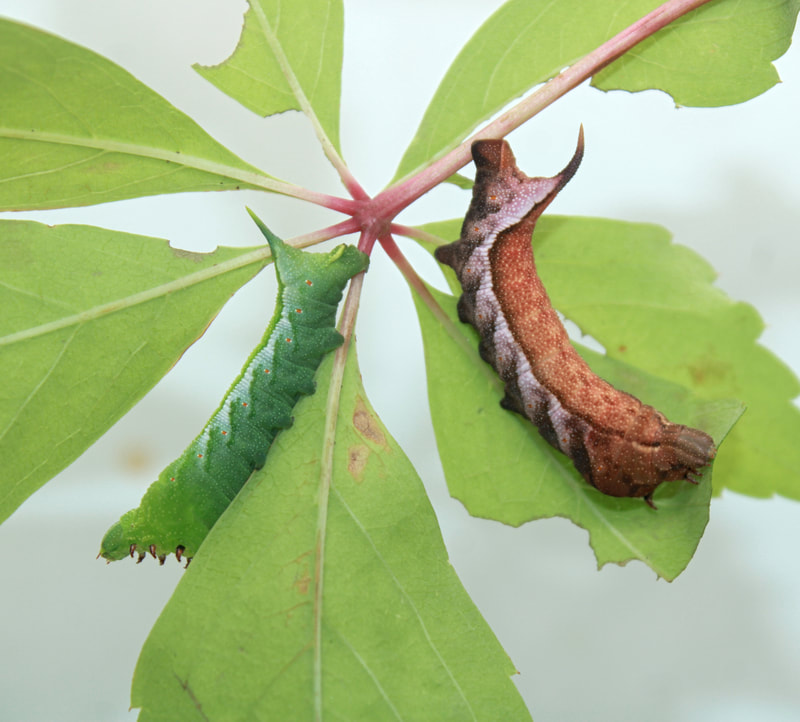|
Common Name(s): Virginia Creeper Sphinx,
Hog Sphinx Ecology and Life History: This moth flies throughout the warmer months in the Northeastern United States, and can be found nearly year-round in the deep south. This species will readily come to light, but will also come to bait when offered. Both sexes will visit light. Males are often slightly smaller than females, with female abdomens being slightly rounder and larger than males. Moths will seemingly oviposit anywhere on the hostplant. I have watched a female D. myron sit on a Vitis leaf and lay a dozen eggs before moving to the next one. As a result, caterpillars may be found singularly, or in small groups when they are small. The final instar larva may also have a brown form. Habitat and Searching for Larvae: This is another species found on vitaceous vines. Vitis is a particular favorite, with Parthenocissus quinquefolia following closely. Larvae are most easily found on grape vines sprawling trees, fences, boulders, or the ground, particularly vines in edge habitats. Large fields and river washes with grape will often yield many caterpillars. In the early spring, searching grape leaves with small holes in them will often yield sphingid larvae. In the Northeast, caterpillars begin appearing in May and end in October. In the deep south, this may be more or less a year-round species. The larvae do fluoresce under UV light, which makes finding them easier. Rearing Notes: Female moths will deposit eggs in a paper bag, but also on host if placed in a flight cage. Larvae are a bit sensitive to overcrowding, especially if being reared indoors. This species does quite well if reared on fresh hostplant in a screen cage or outdoors on a sleeve. Pupation is quite easy to achieve in damp paper towel or in soil that has been misted. Adult description: A small sphingid, with forewings only 26-32mm (2) in length. The ground color of this moth is greenish-brown with two dark bands running through the forewings, and a lighter area in between. There is a lighter area in the margin of the wing tip where it bends inward forming the falcate tip. The hindwings of this species are orange. It can be confused with Darapsa choerilus in some areas, but that species tends to be brownish overall and larger. A main difference between the two is the absence of foretibial spines on Darapsa myron. Larval description: L5: This is a small larva. They come in either a brownish form or green form. The larva has bright red spiracles and 6 large white streaks surrounding each spiracle. The last white streak extends to the green horn, which usually angles backwards. The most distinctive characteristic of this species is the beautiful red-orange markings on the dorsal side of the larva. The swollen A1-2 segments are pronounced and like other members of this genus, it will retract it’s head into them if disturbed. Host plants: Click here to load this Caspio Cloud Database
Cloud Database by Caspio |
The gallery to the left contains photos of Darapsa myron adults. If you have a photo that you would like to submit to us, please contact us.
The gallery to the right contains photos of Darapsa myron larval and pupal stages. If you have a photo that you would like to submit to us, please contact us.
The gallery to the right contains photos of Darapsa myron larval and pupal stages. If you have a photo that you would like to submit to us, please contact us.
|
|
|
